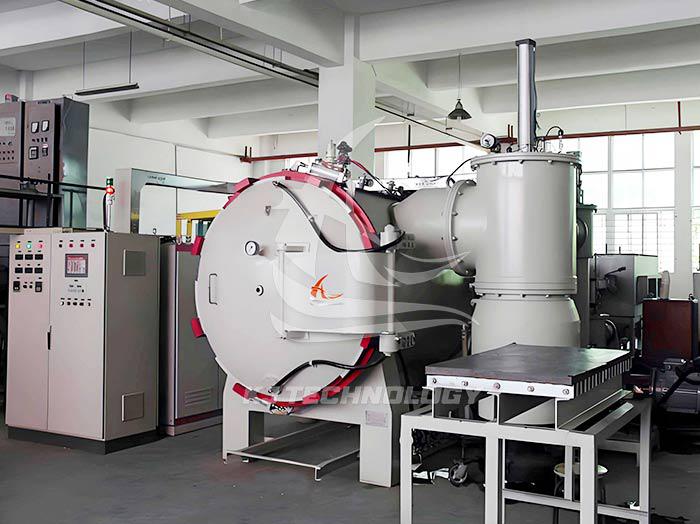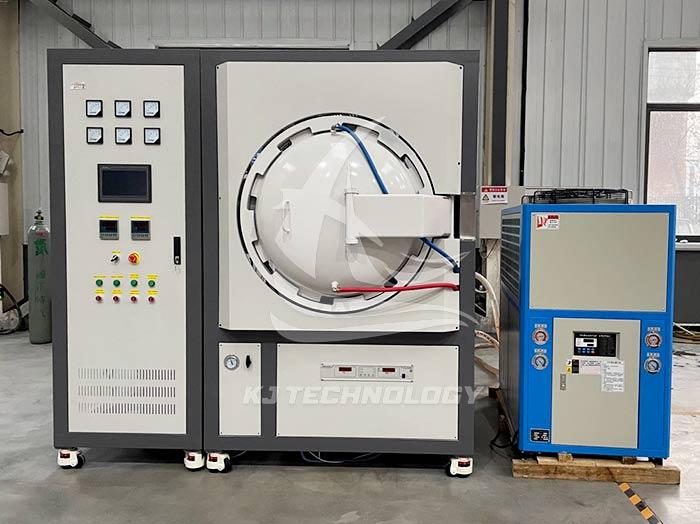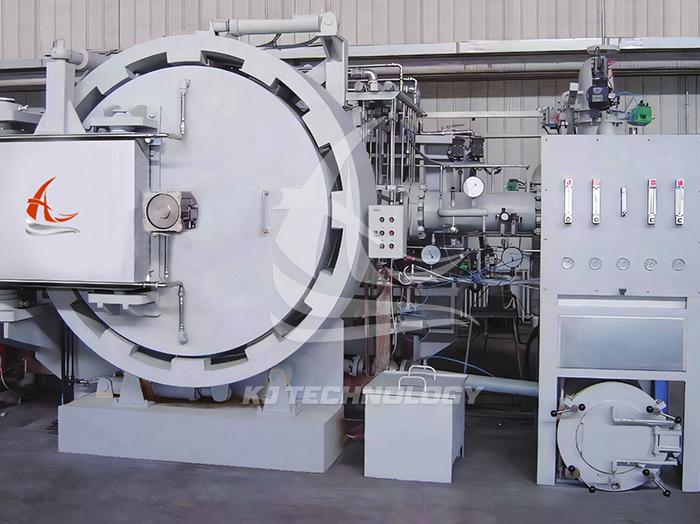Can vacuum graphite high-temperature furnace be used for brazing?
 11-06-2025 Author: KJ technology
11-06-2025 Author: KJ technology
The vacuum graphite high-temperature furnace can be used for brazing, especially in precision brazing processes that require high temperature, vacuum, or protective atmosphere, it has significant advantages. The following is a specific analysis:
1. The core advantages of vacuum graphite high-temperature furnace in brazing
High temperature performance and vacuum environment
The furnace temperature of the vacuum graphite high-temperature furnace can reach 1600 ℃ to 2800 ℃, and it can operate in a vacuum (with a maximum vacuum degree of 5 × 10 ⁻⁶ mbar) or inert gas (such as argon and nitrogen) environment. This condition can effectively prevent metal oxidation at high temperatures, ensuring the purity and quality of brazed joints. For example, in the aerospace field, vacuum brazing furnaces are commonly used for welding aluminum, copper, nickel, stainless steel, and high-temperature alloys to avoid oxide films affecting joint strength.
Characteristics of graphite materials
High temperature resistance and chemical stability: Graphite has a melting point of up to 3652 ℃ and is not easily reactive with most metals at high temperatures, making it suitable as a brazing mold or heating element.
Excellent thermal conductivity: Graphite has high thermal conductivity, which can quickly and uniformly conduct heat, ensuring uniform heating of welding materials and reducing the risk of cracking caused by thermal stress.
Small coefficient of thermal expansion: Graphite is dimensionally stable at high temperatures, which can reduce welding deformation caused by differences in thermal expansion.
Precise control and automation
Modern vacuum graphite high-temperature furnaces are equipped with advanced automation control systems (such as PLC+WINCC visual interface), which can accurately control temperature, vacuum degree, and atmosphere pressure, support multi-stage process program settings, and meet the needs of complex brazing processes.
2. Typical application scenarios of vacuum graphite high-temperature furnace in brazing
Aerospace field
Transition liquid phase diffusion welding (TLP) is used for single crystal alloy blades in engines, achieving reliable connection between the blades and the substrate through a high-temperature vacuum environment.
Welding difficult to weld materials such as titanium alloys and nickel based high-temperature alloys to avoid oxidation and impurity contamination.
Electronics and Precision Machinery
Welding precision components such as electronic components and sensors to ensure the reliability and stability of electrical connections.
Used for brazing ceramics and metals (such as the connection between Al ₂ O ∝ ceramics and metals), improving wettability through pre plated metal layers to achieve crack free joints.
Automotive and Energy Industry
Welding automotive heat exchangers, fuel cell components, etc. to improve the corrosion resistance and sealing of materials.
Used for welding special materials in the fields of nuclear energy, solar energy, etc., to meet the performance requirements in high temperature and high pressure environments.
3. Precautions
Material compatibility: It is necessary to ensure that the brazing material and graphite material do not react at high temperatures to avoid corroding the graphite heating element.
Process parameter optimization: Temperature, vacuum degree, and insulation time need to be adjusted according to material characteristics to achieve the best welding effect.
Equipment maintenance: Regularly clean the oxide scale and impurities in the furnace to prevent contamination of workpieces or damage to graphite components.








